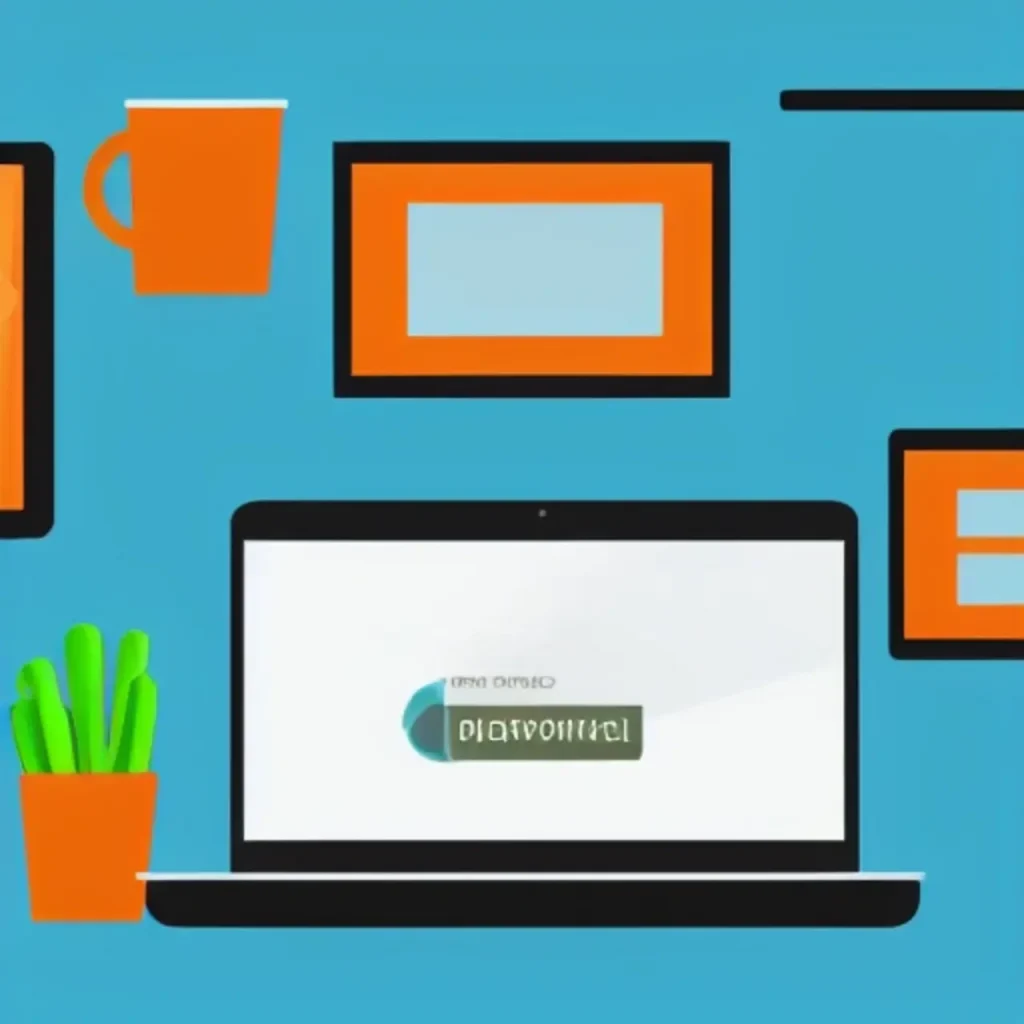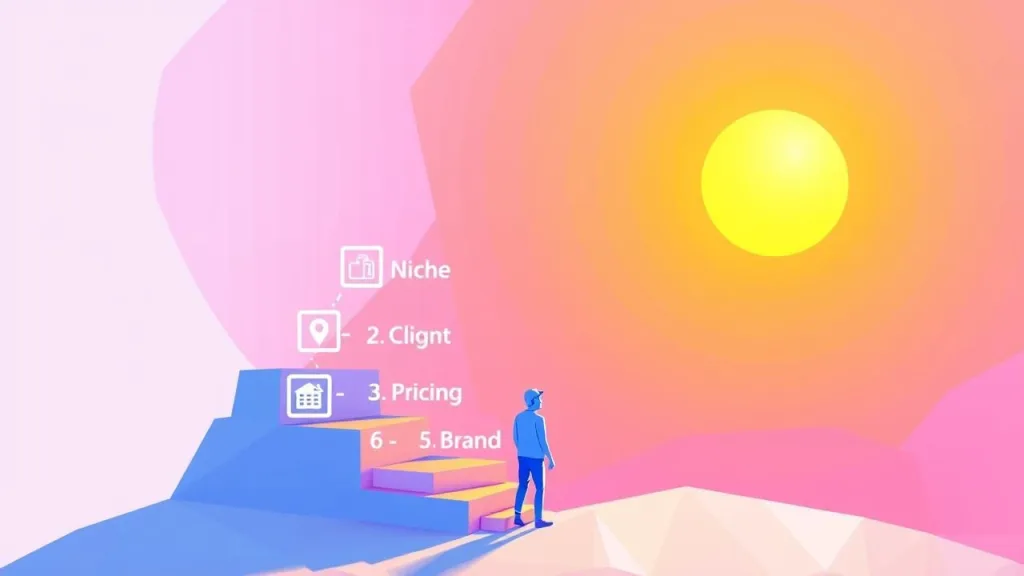How to Find Your First Freelance Client: A Step-by-Step Guide
(CNN) — The freelance economy is booming. Millions are embracing the flexibility and autonomy of self-employment, but nearly all face the same daunting question: how to find your first freelance client? It’s the single biggest hurdle that separates aspiring freelancers from successful business owners. The feeling of having valuable skills but no one to pay for them can be paralyzing.
This isn’t just another list of generic tips. This is your comprehensive 2025 roadmap. We will walk you through the essential foundational work, proactive outreach strategies, and the critical steps to seal the deal. By the end of this guide, you will have a clear, actionable plan to land that pivotal first client and launch your freelance career with confidence.
Table of Contents
- Before You Start: Laying a Rock-Solid Foundation
- The Proactive Approach: Actively Hunting for Your First Client
- The Inbound Strategy: Making Clients Come to You
- You’ve Made Contact! Now What? Sealing the Deal
- Common Pitfalls to Avoid on Your Search
- Frequently Asked Questions
Before You Start: Laying a Rock-Solid Foundation
Many new freelancers jump straight into sending proposals on platforms like Upwork without any prep work. This is like trying to build a house without a foundation. Success in finding your first freelance client begins with strategic preparation. Getting these fundamentals right will increase your chances tenfold.
Pinpoint Your Niche: The Power of Specialization
You cannot be everything to everyone. Generalists compete with a global sea of freelancers on price. Specialists, however, command higher rates because they solve specific, high-value problems. A business will pay more for a “Shopify conversion rate optimization expert for fashion brands” than a generic “web developer.”
- Analyze Your Skills: What are you genuinely good at? What tasks do you enjoy?
- Research Market Demand: Are businesses actively hiring for this skill? Check job boards and LinkedIn.
- Combine Skill with Passion/Industry: Can you apply your skill (e.g., writing) to an industry you know well (e.g., fintech, healthcare, travel)? This is your niche.
Specializing makes you memorable and positions you as an expert, even at the beginning of your career.
Define Your Ideal Client Profile (ICP)
Once you have a niche, define exactly who you want to work with. Your Ideal Client Profile is a detailed description of the business you’re targeting. Ask yourself:
- What industry are they in? (e.g., SaaS, e-commerce, local services)
- What is their company size? (e.g., solo entrepreneurs, startups with 10-50 employees, marketing departments in large corporations)
- What specific problem do they have that you can solve? (e.g., “They struggle to generate leads from their blog,” or “Their social media engagement is low.”)
- Where do they hang out online? (e.g., LinkedIn, specific Slack communities, industry forums)
Knowing your ICP dictates where you’ll look for clients and how you’ll communicate with them.
Craft a Compelling Service Offer & Set Your Rates
Don’t just sell your time; sell an outcome. Instead of “I offer 10 hours of social media management,” offer a “Monthly Social Media Growth Package” that includes specific deliverables and focuses on the result (e.g., increased engagement and brand awareness). For more guidance, you can check out our detailed guide on how to set your freelance rates.
When pricing, consider these models:
- Hourly: Simple to start with, but it penalizes efficiency. Best for projects with unclear scopes.
- Project-Based: A fixed fee for a defined project. This is preferred by clients as it’s predictable.
- Value-Based: The price is based on the value and ROI your work delivers to the client. This is the most profitable but requires confidence and a strong portfolio.
Build a “Minimum Viable Portfolio” (Even Without Clients)
The classic dilemma: “I need a portfolio to get clients, but I need clients to build a portfolio.” The solution is to create your own experience.
What is a Minimum Viable Portfolio? It is a small collection of 2-3 high-quality pieces that prove you can do the work. Here’s how to build one from scratch:
- Create Spec (Speculative) Work: Redesign the landing page of a well-known brand. Write a blog post for a company you admire. Create a social media campaign for a fictional product. Treat it like a real project.
- Offer Your Services to a Non-Profit: Many charities need skilled help but have limited budgets. You gain a real-world case study and a testimonial.
- Launch a Personal Project: Start a blog, a YouTube channel, or a niche website related to your skill. This not only showcases your ability but also demonstrates initiative.
Host your portfolio on a simple website (Carrd, Squarespace) or even a professional-looking PDF you can attach to emails.
The Proactive Approach: Actively Hunting for Your First Client
With your foundation in place, it’s time to hunt. Waiting for clients to find you is not a strategy. The following methods are about taking direct, consistent action to find your first freelance client.
Mastering Freelance Platforms: Beyond the Bidding Wars
Platforms like Upwork and Fiverr are crowded, but they are also where millions of clients are actively looking to hire. The key is to use them strategically, not to compete on being the cheapest.
- Upwork: Focus on creating a 100% complete, highly specialized profile. Write custom, client-focused proposals for every job you apply to. Reference a specific point in their job description to show you’ve read it carefully.
- Fiverr: Don’t just create a basic gig. Create a tiered gig package (Basic, Standard, Premium) that solves a specific problem. Use a high-quality video in your gig description to stand out.
- Niche Platforms: Explore platforms specific to your industry. For writers, there’s Contently. For designers, Toptal or Dribbble’s job board. These have less competition and higher-quality clients.
The Art of the Cold Pitch: How to Email Strangers (and Get a Response)
Cold pitching is the single most powerful way to land high-quality clients. It involves finding businesses that fit your ICP and reaching out with a personalized email.
A successful cold pitch follows this structure:
- A Specific Subject Line: Avoid generic titles. Try “Quick question about [Company Name]’s blog” or “Idea for improving [Specific Area].”
- Personalized Opening: Show you’ve done your research. “I was really impressed with your recent case study on [Client X]” works better than “Dear Sir/Madam.”
- The Value Proposition: Briefly state a problem you’ve noticed and how your skills can solve it. “I noticed your blog posts aren’t optimized for search, which might be costing you traffic. I specialize in SEO writing for B2B SaaS companies and can help you rank for target keywords.”
- Provide Proof: Link to 1-2 relevant samples from your portfolio.
- Clear Call-to-Action (CTA): End with a simple, low-commitment question. “Would you be open to a brief 15-minute chat next week to discuss this further?”
Aim to send 5-10 personalized cold pitches per day. Consistency is more important than volume.
Tapping into Your Existing Network: The “Low-Hanging Fruit” Method
Your first client is often closer than you think. Don’t be afraid to announce your new venture to your network.
- Friends and Family: Let them know what you’re doing. They may not need your services, but they might know someone who does.
- Former Colleagues & Employers: People you’ve worked with before already trust your work ethic. Reach out and see if their company hires freelancers or if they can provide a referral.
- A Simple Social Media Post: Post on LinkedIn announcing your freelance services. Be specific about what you offer and who you help. For example: “Excited to announce I’m now offering freelance graphic design services for tech startups! If you know anyone looking to elevate their branding, I’d love an introduction.”
The Inbound Strategy: Making Clients Come to You
While proactive outreach gets you your first client, an inbound strategy will sustain your career long-term. This is about positioning yourself as an expert so that clients find you.
Optimizing Your LinkedIn Profile for Discovery
Your LinkedIn profile is not a resume; it’s a sales page. Optimize it to attract your ICP.
- Headline: Don’t just put “Freelancer.” Use a client-focused headline like: “Freelance Copywriter Helping E-commerce Brands Increase Sales with Email Marketing.”
- About Section: Write this in the first person. Address your client’s pain points directly and explain how you solve them. End with a clear call to action.
- Featured Section: Pin your best portfolio pieces and any testimonials you receive.
- Engage: Spend 15 minutes a day leaving thoughtful comments on posts from potential clients or industry leaders. This increases your visibility.
Content as a Client Magnet: A Simple Start
You don’t need a massive content marketing machine to start. Begin with one high-value piece of content that directly addresses a major pain point for your ICP. This could be a detailed blog post, a helpful checklist, or a short video tutorial. Share it on LinkedIn and in relevant online groups. This demonstrates your expertise and attracts inbound leads.
You’ve Made Contact! Now What? Sealing the Deal
Getting a positive reply is only half the battle. Knowing how to professionally manage the next steps is crucial for converting a lead into your first client.
Nailing the Discovery Call
The goal of a discovery call is to diagnose the client’s problem and determine if you are the right fit. It’s a consultation, not a sales pitch. Ask smart questions:
- “What does success look like for this project?”
- “What have you tried in the past that didn’t work?”
- “What is the budget you have allocated for this?”
- “What is your timeline for getting started?”
Listen more than you talk. At the end of the call, summarize their needs and outline the next steps (e.g., “Thanks for sharing that. Based on our conversation, I’ll put together a formal proposal and send it over by tomorrow.”).
Creating a Professional Proposal That Wins
A good proposal formalizes your conversation and proves you understand the client’s goals. It should include:
- Project Scope: A clear summary of the client’s problem and your proposed solution.
- Deliverables: A specific list of what you will provide (e.g., 4 blog posts, 1 website redesign mock-up).
- Timeline: An estimated project timeline with key milestones.
- Investment: Your project fee. Frame it as an “Investment,” not a “Cost.” Offer 2-3 pricing tiers if possible.
- Next Steps: How to move forward (e.g., “To get started, simply sign this proposal and pay the 50% deposit.”).
Using one of the many available freelance financial tools like Bonsai or HoneyBook can help you create professional-looking proposals quickly.
Common Pitfalls to Avoid on Your Search
The path to finding your first client is filled with potential missteps. Being aware of them can save you significant time and frustration.
- Analysis Paralysis: Don’t spend months perfecting your website or portfolio. Good enough is good enough to start. Take action.
- Underpricing Your Services: It’s tempting to go low to get the first client, but this sets a bad precedent and attracts low-quality clients. Price based on value, not fear.
- Not Following Up: People are busy. If you don’t hear back from a pitch or a proposal, a polite follow-up email after 3-5 business days is essential.
- Generic, Copy-Pasted Pitches: Clients can spot a template from a mile away. Personalization is non-negotiable.
- Giving Up Too Soon: You will face rejection. It’s a numbers game. Every “no” brings you closer to a “yes.” Stay persistent and treat your client search like a job.
Frequently Asked Questions (FAQ)
How long does it take to get your first freelance client?
This varies widely. If you dedicate consistent effort (e.g., 1-2 hours per day on focused outreach), it’s realistic to land your first client within 30-90 days. The key is consistent, daily action rather than sporadic bursts of effort.
Do I need a website to start freelancing?
No, you don’t need a complex website to start. A professional LinkedIn profile and a high-quality PDF portfolio are often enough to secure your first client. You can build a full website later as your business grows.
How do I charge for my first project?
For your first project, a fixed project-based price is often the safest and most professional option. Calculate how many hours you think it will take, multiply by a fair hourly rate, and add a 20% buffer for unexpected revisions or communication time.
What if I get rejected?
Rejection is a normal and expected part of freelancing. Do not take it personally. See it as data. Was your pitch not personalized enough? Was your price too high for that particular client? Learn from each interaction, refine your approach, and keep moving forward.
Conclusion: Your Journey Starts Now
Finding your first freelance client is a methodical process, not a matter of luck. It’s a journey that begins with a strong foundation, moves into consistent, proactive outreach, and culminates in professional follow-through. The strategies outlined in this roadmap—from specializing in a niche to mastering the cold pitch—are the proven building blocks of a successful freelance career.
The hardest client to find is always the first. But once you secure that initial project and deliver excellent results, you’ll gain the confidence, portfolio piece, and testimonial needed to build unstoppable momentum. The journey of a thousand clients begins with a single step. Start taking that step today.
Last Updated: October 2025
FreelanceFin’s opinion: What was the one strategy that finally worked for you when you were looking for your first client? Share your story in the comments below!
References and Further Reading
- Forbes: How To Find Your First Freelance Clients When You’re Just Starting Out.
- Upwork: 19 Ways To Find and Land Your First Freelance Jobs.
- Harvard Business Review: How to Build a Successful Freelance Career.
- HubSpot: The Cold Email Template That Gets an 80% Response Rate.
- U.S. Small Business Administration (SBA): Choose a business structure.
- GOV.UK: Working for yourself.
- Contently: How to Build a Killer Freelance Portfolio With No Experience.
- LinkedIn Marketing Blog: 10 ways to use LinkedIn to get more clients.
- The Balance: How to Find Freelance Work, Gigs, and Projects.
- Copyblogger: How to Get Your First Freelance Writing Client.




